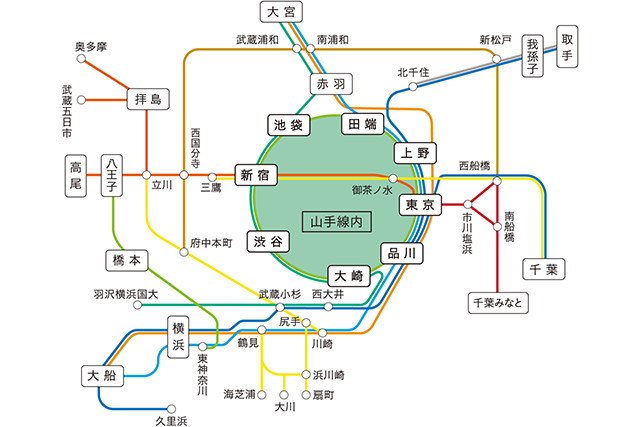Following the government’s approval of its request to increase fare caps, JR East will implement its first fare revision since its founding in 1987, excluding those due to the consumption tax hike, in March 2026.
Eliminate “commuter specified section” and “inside of Yamanote Line” fares
While JR East has maintained its fare levels for approximately 40 years, it anticipates a continuing challenging business environment, including a decline in rail travel due to population decline and new lifestyles, rising energy and commodity prices, and improvements to employee benefits. They explains that it needs to secure funds for investments to maintain safety and improve services, as well as respond to increasingly severe natural disasters, and that the fare revisions are subject to management efforts. The rate of increase will be 7.1% (regular fares: 7.8%, commuter passes: 12.0%, student passes: 4.9%). The barrier-free fare added to fares at train stations will also be abolished.
This time, the “commuter specified section” and “inside of Yamanote Line” fare categories, which are currently cheaper than other areas in the Tokyo metropolitan area, will be abolished and consolidated into the “trunk lines” category. The commuter / Yamanote sections were established during the Japan National Railways (JNR) era, when fares were constantly increasing. Originally, these were measures to curb fares and increase competitiveness with private railways and subways. However, the fare gap has now narrowed or even reversed. While the consolidation will result in larger fare increases, particularly in the Tokyo metropolitan area, JR East plans to invest approximately 70% of its future capital investments in the Tokyo metropolitan area. This will eliminate area-specific differences and make the fare structure easier to understand. The company plans to cover any funding shortfalls with increased revenue in the Tokyo metropolitan area while continuously improving convenience.
40 years since the JNR era… competition with other railways a thing of the past?
With the fare per 1 yen for IC card, the base fare for trunk and regional lines will increase from the current 147 yen to 155 yen. For the commuter / Yamanote sections, the base fare will increase from the current 146 yen (including a 10 yen for station barrier-free fee) to the same 155 yen as the trunk lines. While the discount rate for six-month commuter passes will be revised, “off-peak passes,” which can be used outside of morning peak hours, will continue to offer a 15% discount on regular commuter passes and will be expanded in eligible areas. To accommodate household budgets, student commuter pass fares for trunk and regional lines will remain unchanged, but fares for the commuter / Yamanote sections will be increased to the same price as trunk lines due to the merger.
The current fare system also includes a “designated sections (Tokyo area)” with limited departure and arrival stations, a system that has been in place since the days of the Japan National Railways. However, due to changes in the line configuration, many sections no longer compete with each other, so this fare will be abolished with the exception of some sections, such as between Tokyo Station and Nishi-Funabashi Station, between Shinjuku Station and Hachioji Station, and between Shibuya Station and Yokohama Station. The current fare (IC) for the Shinagawa Station to Kurihama Station section, one of the designated sections, is 945 yen. However, after the revision, as this section will no longer be designated, trunk lines fares will apply, bringing the fare to 1,221 yen, an increase of 276 yen from the current price. In addition, for the Tokaido Shinkansen and Tokaido Line between Tokyo Station and Atami Station, which are currently considered to be the same line for fare calculation purposes, a fare difference will occur, and after the revision, fares will be calculated as if they were different lines.






